Late in the week, global stocks made it clear that the tariff announcement was worse-than-expected. We were looking for a roughly 10% effective tariff rate once all the details were parsed, but the actual figure appears to be closer to 20%. That’s also about double what the general market was expecting, and as I’ve written time and again, markets do not like negative surprises.
Panicked investors everywhere are trying to decipher what to do next, which makes the current environment ripe for major missteps.
These are the moments historically when investors start trying to predict what is going to happen next, and the assessments tend to skew sharply negative. In the current environment, it may mean predicting a prolonged trade war, a recession (or worse), and/or more equity market downside. It does not matter if you have been an investor for one year or for 30+ years like me—the chances of being precisely correct are very, very low.
Investors tried to make the same predictions the day after Black Monday in 1987, when the S&P 500 fell -22.61% in a single day. Ditto in 2008, when a plummeting market was accompanied by images of bankers leaving Lehman Brothers with boxes. The Covid-19 pandemic is arguably in a league of its own in this respect, too.
There are very reasonable arguments that the current shift in trade policy should fall into a different category, given the medium- to long-term implications it could have on growth, prices, and global economic order. I could write many columns fleshing out economic theories for and against tariffs, while analyzing every line item of the April 2 announcement and making projections for economic impact. This is the type of work we do at Zacks Investment Management — determining which stocks and bonds to own in portfolios, as we make earnings and interest rate forecasts.
But this is not the type of analysis I think investors should be doing when determining whether or not to stay invested.
Even if we knew for sure the U.S. was either in—or heading for—a recession, it would not necessarily make it a prudent strategy to get out of stocks. The fundamental problem with this decision is that investors cannot know when to get back in, which is a dilemma that’s complicated further by the market’s tendency to rally when the news is still dismal and uncertain.
Think back to the Covid-19 pandemic. These were the biggest S&P 500 selloffs in March 2020:
- March 6, 2020: -7.6%
- March 11, 2020: -9.51%
- March 13, 2020: -11.98%
Some may find it difficult to fathom/remember such steep declines one after the other, but that’s what the market did. If you told me I could travel back in time to March 1, 2020—armed with knowledge that the market was about to experience severe ‘short-term pain’—my position would be the same: I still wouldn’t sell.
That’s because throughout history, the news cycle lags the market by many, many months. When stocks started to surge in 2020, the unemployment rate was double digits, and the vaccine was nine months away from being approved. There were hardly any green shoots to be found anywhere.
And that’s my main point: selling out of the market today substantially increases the chances of being whipsawed when a rally takes hold, which again, no one can know the precise timing of.
In the current environment, the setup is that any modicum of good news on trade will factor as a positive surprise for markets going forward, which will almost certainly trigger strong moves higher. Long-term investors simply cannot afford to miss these upswings. If you put $10,000 into the S&P 500 on January 1, 1980, and stayed invested through March 31, 2025, you’d have $1,635,083.
But if you missed just the five best days in the market over that period, your investment would have grown to just $1,013,782.
That’s over half a million dollars for missing the best five days, which also meant staying invested in the days following the 1987 Black Monday crash, and throughout the Tech Bubble, 2008 Global Financial Crisis, and the Covid-19 pandemic. That’s a very hard series of choices for investors to make, but throughout history it has paid off. I’m convinced it will again.
Bottom Line for Investors
The market’s response to the tariff announcements was unsettling, and I empathize with the challenges and stress such sharp declines can cause for investors. The emotional dimension of market declines can give many investors the urge to act.
But as history has shown, the best course of action is often to resist this urge. Markets are unpredictable day to day—with about a 50/50 chance of gains or losses—but over longer periods, the odds shift dramatically in the investor’s favor. Since 1937, being invested in U.S. stocks for five years has meant earning positive returns 93% of the time. Over 10 years, it’s 97.4%.
Remaining invested during turbulent times is not easy, but it has been—and will continue to be, in my view—the single most reliable strategy for building wealth over time. The power of compounding works best when left alone.
1 Wall Street Journal. March 15, 2025. https://advisor.zacksim.com/e/376582/d-economy-feat5-consumers-pos2/5stkd8/1189097503/h/cEzFYzByPVvCyinLeWRQSlQVBjbe7jfV2huGBrJhdqY
2 Fred Economic Data. February 21, 2025. https://advisor.zacksim.com/e/376582/series-MICH-/5stkdc/1189097503/h/cEzFYzByPVvCyinLeWRQSlQVBjbe7jfV2huGBrJhdqY
3 Google Trends. 2025.
DISCLOSURE
Past performance is no guarantee of future results. Inherent in any investment is the potential for loss.
Zacks Investment Management, Inc. is a wholly-owned subsidiary of Zacks Investment Research. Zacks Investment Management is an independent Registered Investment Advisory firm and acts as an investment manager for individuals and institutions. Zacks Investment Research is a provider of earnings data and other financial data to institutions and to individuals.
This material is being provided for informational purposes only and nothing herein constitutes investment, legal, accounting or tax advice, or a recommendation to buy, sell or hold a security. Do not act or rely upon the information and advice given in this publication without seeking the services of competent and professional legal, tax, or accounting counsel. Publication and distribution of this article is not intended to create, and the information contained herein does not constitute, an attorney-client relationship. No recommendation or advice is being given as to whether any investment or strategy is suitable for a particular investor. It should not be assumed that any investments in securities, companies, sectors or markets identified and described were or will be profitable. All information is current as of the date of herein and is subject to change without notice. Any views or opinions expressed may not reflect those of the firm as a whole.
Any projections, targets, or estimates in this report are forward looking statements and are based on the firm’s research, analysis, and assumptions. Due to rapidly changing market conditions and the complexity of investment decisions, supplemental information and other sources may be required to make informed investment decisions based on your individual investment objectives and suitability specifications. All expressions of opinions are subject to change without notice. Clients should seek financial advice regarding the appropriateness of investing in any security or investment strategy discussed in this presentation.
Certain economic and market information contained herein has been obtained from published sources prepared by other parties. Zacks Investment Management does not assume any responsibility for the accuracy or completeness of such information. Further, no third party has assumed responsibility for independently verifying the information contained herein and accordingly no such persons make any representations with respect to the accuracy, completeness or reasonableness of the information provided herein. Unless otherwise indicated, market analysis and conclusions are based upon opinions or assumptions that Zacks Investment Management considers to be reasonable. Any investment inherently involves a high degree of risk, beyond any specific risks discussed herein.
The S&P 500 Index is a well-known, unmanaged index of the prices of 500 large-company common stocks, mainly blue-chip stocks, selected by Standard & Poor’s. The S&P 500 Index assumes reinvestment of dividends but does not reflect advisory fees. The volatility of the benchmark may be materially different from the individual performance obtained by a specific investor. An investor cannot invest directly in an index.
The Russell 1000 Growth Index is a well-known, unmanaged index of the prices of 1000 large-company growth common stocks selected by Russell. The Russell 1000 Growth Index assumes reinvestment of dividends but does not reflect advisory fees. An investor cannot invest directly in an index. The volatility of the benchmark may be materially different from the individual performance obtained by a specific investor.
Nasdaq Composite Index is the market capitalization-weighted index of over 3,300 common equities listed on the Nasdaq stock exchange. The types of securities in the index include American depositary receipts, common stocks, real estate investment trusts (REITs) and tracking stocks, as well as limited partnership interests. The index includes all Nasdaq-listed stocks that are not derivatives, preferred shares, funds, exchange-traded funds (ETFs) or debenture securities. An investor cannot invest directly in an index. The volatility of the benchmark may be materially different from the individual performance obtained by a specific investor.
The Dow Jones Industrial Average measures the daily stock market movements of 30 U.S. publicly-traded companies listed on the NASDAQ or the New York Stock Exchange (NYSE). The 30 publicly-owned companies are considered leaders in the United States economy. An investor cannot directly invest in an index. The volatility of the benchmark may be materially different from the individual performance obtained by a specific investor.
The Bloomberg Global Aggregate Index is a flagship measure of global investment grade debt from twenty-four local currency markets. This multi-currency benchmark includes treasury, government-related, corporate and securitized fixed-rate bonds from both developed and emerging markets issuers. An investor cannot invest directly in an index. The volatility of the benchmark may be materially different from the individual performance obtained by a specific investor.
The ICE Exchange-Listed Fixed & Adjustable Rate Preferred Securities Index is a modified market capitalization weighted index composed of preferred stock and securities that are functionally equivalent to preferred stock including, but not limited to, depositary preferred securities, perpetual subordinated debt and certain securities issued by banks and other financial institutions that are eligible for capital treatment with respect to such instruments akin to that received for issuance of straight preferred stock. An investor cannot invest directly in an index. The volatility of the benchmark may be materially different from the individual performance obtained by a specific investor.
The MSCI ACWI ex U.S. Index captures large and mid-cap representation across 22 of 23 Developed Markets (DM) countries (excluding the United States) and 24 Emerging Markets (EM) countries. The index covers approximately 85% of the global equity opportunity set outside the U.S. An investor cannot invest directly in an index. The volatility of the benchmark may be materially different from the individual performance obtained by a specific investor.
The Russell 2000 Index is a well-known, unmanaged index of the prices of 2000 small-cap company common stocks, selected by Russell. The Russell 2000 Index assumes reinvestment of dividends but does not reflect advisory fees. An investor cannot invest directly in an index. The volatility of the benchmark may be materially different from the individual performance obtained by a specific investor.
The S&P Mid Cap 400 provides investors with a benchmark for mid-sized companies. The index, which is distinct from the large-cap S&P 500, is designed to measure the performance of 400 mid-sized companies, reflecting the distinctive risk and return characteristics of this market segment.
The S&P 500 Pure Value index is a style-concentrated index designed to track the performance of stocks that exhibit the strongest value characteristics by using a style-attractiveness-weighting scheme. An investor cannot directly invest in an index. The volatility of the benchmark may be materially different from the individual performance obtained by a specific investor.







